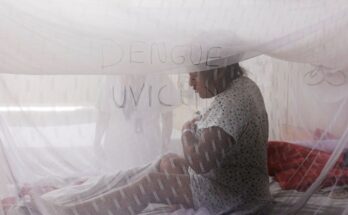This question may seem strange and yet researchers have asked it… Previous studies have already shown that adults base themselves on a person’s face to know if they are sick or not and if they can approach them or on the contrary, avoid it so as not to fall ill in turn. On the other hand, no scientific study has looked at the reaction of children to sick faces.
According to the World Health Organization (WHO), infectious diseases are the leading cause of death among children. We also know that children are more at risk than adults of contracting an infectious disease. According to researchers from several major universities around the world (the University of Miami, the Chinese University of Hong Kong Shenzhen, Duke University and James Madison University), this could be explained by the fact that children have more difficulty than adults in recognizing sick faces and therefore avoiding contagious people. According to them, this “competence” is not innate but comes with age, through experience.
Find the sick face between two photos of the same person
To verify this, they conducted a (funny) online experiment, on adults and children aged 4 to 9 years old. Their work has been published in the journal Child Development.
They asked participants to answer two questions at the same time as they viewed two photos side by side. The photo on the left represented the face of a sick person (affected by a mild but contagious infection) and the photo on the right, the face of the same person but cured. For each pair of photos, the researchers asked participants these two questions:
- Who would you like to sit next to for dinner?
- What do you think is the sick face between the two photos?
The first question allowed the researchers to assess each participant’s ability to recognize healthy people. The second question allowed them to identify participants able to recognize the physical signs of the disease.
A skill that hones with age
Analysis of the responses showed that children aged 8 to 9 were able to avoid and recognize sick faces, but less effectively than adults. In contrast, children aged 4 to 5 had more difficulty identifying sick faces. This therefore confirms that these “skills” are acquired over the years.
A study with many limitations…
This study should be taken with a grain of salt given its many methodological limitations: the cohort was mainly made up of white people, the images provided were photos of faces and not faces and bodies in motion (what children see in real life), and the photos shown showed adult faces but no children’s faces.





